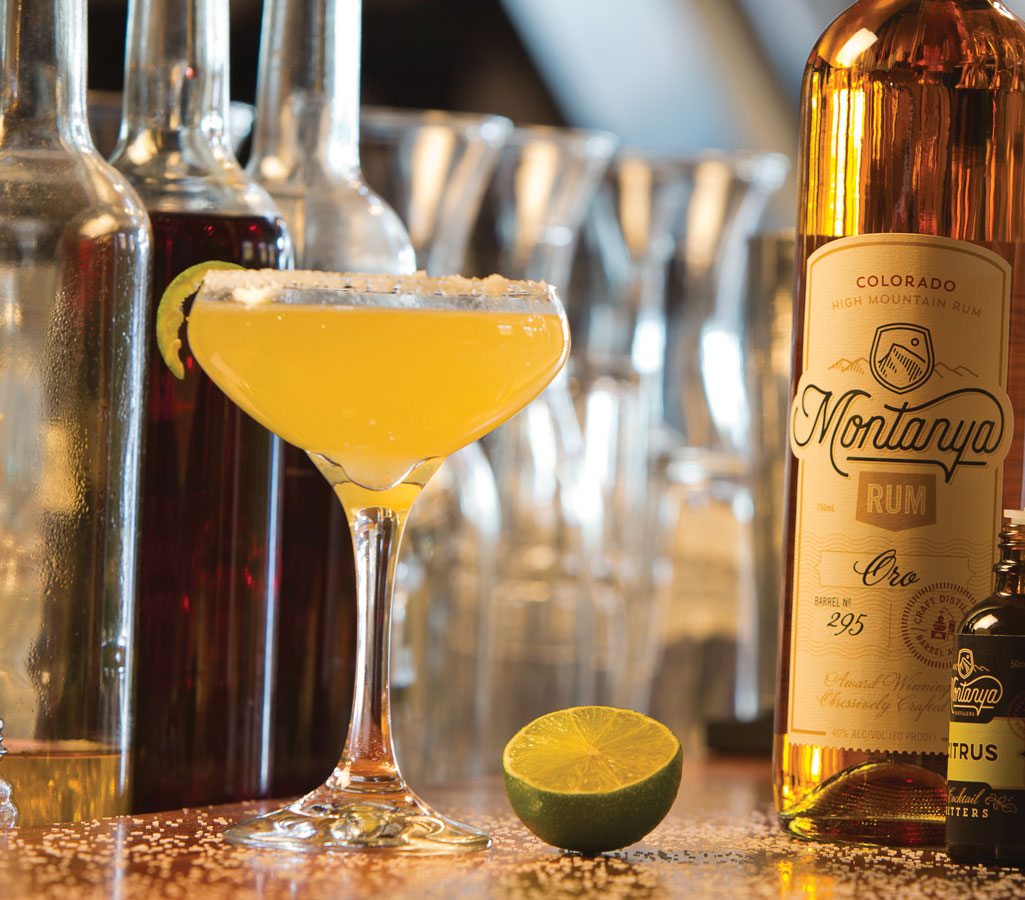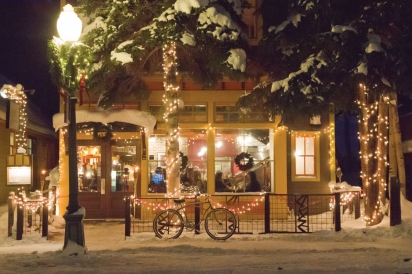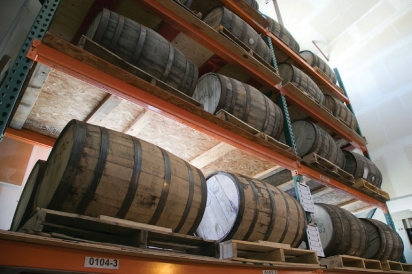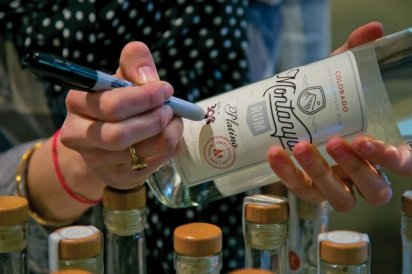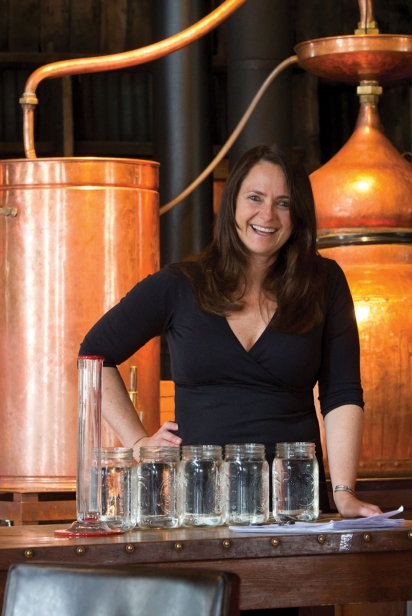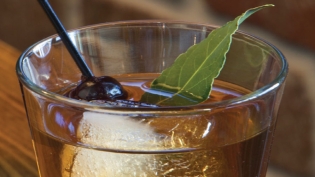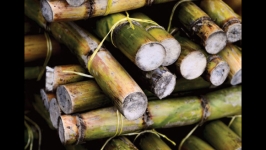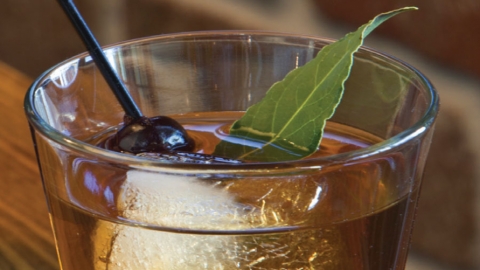From cane to cask: Montanya Distillers
Certain spirits conjure a sense of place. Although rum is made worldwide, it evokes images of tropical isles and azure seas. If Crested Butte’s Montanya Distillers is any indication, however, Colorado rum made with sustainable, traceable, North American ingredients is poised to change the way people think about what’s in their Mai Tai or mojito.
Most domestic rum distillers use imported sugar cane or molasses because they’re more cost-effective, but Montanya direct-purchases non-GMO sugar from Lula-Westfield, a 147-year-old family-owned and -operated company in Belle Rose, Louisiana. That sourcing ethos is but one of many differences between Montanya and other domestic distilleries, and that’s just how owner/ president Karen Hoskin and her husband and head distiller, Brice, want it.
“There’s no such thing as cheap rum—the real cost is paid somewhere,” says Karen. “If it’s not at the cash register, it’s charged to the environment, the sugar cane harvesters’ health, the water supply, air quality and energy consumption. For us, it’s about trying to do the best we can, every day.”
That can-do attitude has garnered Montanya a roster of national and international awards. Despite the distillery’s location in an isolated mountain town, the Hoskins have proven it’s possible to do business in an ethical, sustainable way, right down to the ingredients (the rum is proofed with water from a local aquifer and finished with a touch of wildflower honey from Durango’s Honeyville).
Montanya opened in early 2008. Karen is a former web/graphic designer and brand developer originally from Maine, while Brice, a gifted woodworker who grew up in Grand Junction, was the founder of Mountain Boy Sledworks (he sold the company in 2012).
“I literally woke up one morning on vacation and realized I was tired of using all of my resources to build other people’s dreams,” says Karen. “I loved the work, but it felt like I was giving everything away. I’d been a rum fanatic for nearly 30 years, as well as a bartender and bar manager. I told Brice I wanted to open a distillery that produced hand-crafted rum.” The Hoskins, who have two teenage sons who also help at the distillery, were originally based in Silverton but moved the company to Crested Butte in 2011. “We’re self-taught distillers and distillery managers. Brice is the technical guy and I’m the palate.”
The two-story, 2,400-square-foot, 100-percent-wind-powered headquarters boasts a rustic-mod tasting room where visitors can sample free flights or order refined seasonal cocktails like the Bay Manhattan (recipe page 28). In September, Montanya launched a line of rum-based bitters in flavors like Paonia apple and pineapple-habanero.
The tasting room also features a menu of “globally inspired street food” made with local ingredients whenever possible. The fermentation and distilling space is upstairs (tours are offered during the week), dominated by custom copper Portuguese stills with bases designed by Brice. The aging and bottling are done at a warehouse in Riverland, two miles south of town.
Montanya produces 104 barrels a year (that number may double in 2017) of its three rums. Karen always knew she wanted to produce rum made primarily from what’s in the sugar cane plant naturally: 88 percent cane juice (they use a crystalized form) and 12 percent molasses. “I’m not a big fan of rums made from all molasses and finished with sugar caramel,” she says. “They have a whiff of sulfur on the nose and often finish with overly sweet notes.” Conversely, “When you sip a rum and get a first note of sweet, that’s an additive to mask harshness, add color or introduce flavors that would naturally come from aging” she clarifies. “It’s legal to label a rum as aged for eight to 10 years when in reality, only a couple of ounces of older spirit are added to a younger or unaged blend. I wanted to create a balanced product in which I could trace every drop in the bottle. I’m a proponent for truth in labeling and transparency in production.”
Montanya’s white rum, Platino, hints at cream, cardamom and vanilla— characteristics that come from 12 months of aging in American white oak barrels (now sourced from Laws Whiskey House in Denver; “We don’t use new barrels as part of our ethos of sustainability,” Hoskin says). Oro is aged up to 18 months; its golden hue is enhanced with a touch of caramelized honey, resulting in a spice-forward spirit with notes of caramel and coffee.
Montanya’s greatest triumph is Exclusiva. The exquisite three-year-aged rum debuted last fall, with limited release in Colorado. The spirit spends its final six months finishing in French oak Cabernet Sauvignon and Port barrels from Cortez’s Sutcliffe Vineyards. A medium-bodied sipping rum with notes of clove, cardamom and toasted almond, Exclusiva represents a longtime dream of Karen’s. “I wanted to make a 100-percent aged rum (not a blend) that reflected exactly what I love in the spirit: a dry finish without too much sweetness on the back of the palate.”
Cultivating a connection
When the Hoskins started Montanya, they were committed to the idea of sourcing domestic sugar cane direct from the grower. Explains Karen, “It’s really important for us to be able to walk the walk. We also want products that meet the highest standards for labor, environment and quality.”
Hurricane Katrina hit right before Montanya opened, so they sourced sugar from Hawaii rather than Louisiana. The relationship was never ideal, however, because “it was too costly to have pallets shipped direct like our Louisiana growers/millers now do,” says Karen. The move to source Louisiana sugar was fortuitous for other reasons: Although Hawaii has grown sugar cane for 180 years, in 2016 the state’s last plantation will cease production, thus ending an American agricultural era.
Montanya’s relationship with Lula-Westfield came about four years ago, when Louisiana cane farmer Will Thibault and his wife, Isabel, passed by the tasting room. Isabel is from Gunnison (she and Will met in the 1970s when he was on a ski trip) and the couple were visiting family. Says Will, one of 70 farmers who grow for Lula-Westfield, “I went in and asked where they got their sugar from, and gave their business card to CEO Mike Daigle [see sidebar, “Raising Cane”], and the rest is history. It’s been extraordinary, following the process from harvest to bottle.”
The Hoskins were just as enthusiastic. “We went to Louisiana and visited the mill and farms and watched every step of the process,” says Karen. “The sugar is excellent because the cane grows in rich soil deposited by the Mississippi River and its tributaries. Then we had some of the farmers and their families visit the distillery. The sourcing closed the loop for us, making our rums a certified American product with as much Colorado connection as possible.”
GO FIND IT!
Montanya Distillers
212 Elk Ave., Crested Butte
970.799.3206
MontanyaRum.com
Rum 101
“The definition of rum is and has always been that it’s made from a derivative of the sugar cane plant and distilled to less than 190 proof,” says Karen Hoskin. “Over 190 proof, the spirit is considered to be vodka. You can’t make rum from any other base ingredient like sugar beet, maple or sorghum. From these, you can make “sugar beet spirit’ and the like, but it’s not a rum.”
In Colorado, some distilleries produce sugar beet spirit, while others make rum. The quality, however, starts with the raw ingredient, and can only reach its full potential in the hands of a skilled distiller.


